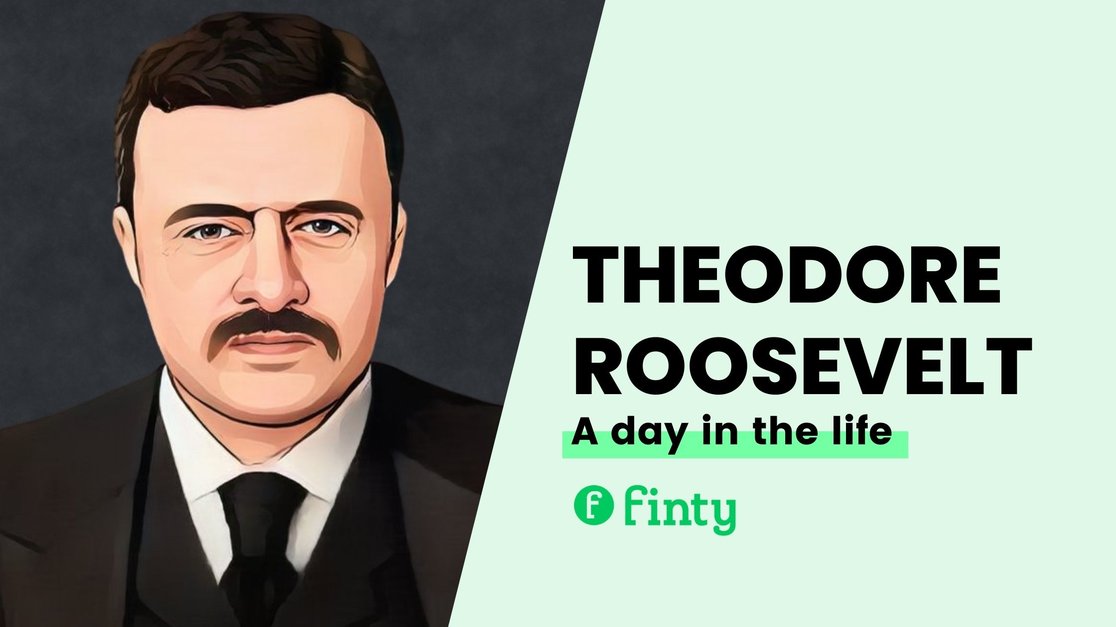Theodore Roosevelt, the 26th president of the United States, was a man of many talents. From being an avid outdoorsman to a prolific quote machine, he never wasted a moment.
He maintained a rigorous schedule, which included many routines that helped him to achieve his goals. Whether he was on the campaign trail or serving as president, Roosevelt's relentless drive and efficiency left no room for procrastination.
Few would envy Roosevelt's daily routine, but it ensured that his time was maximized to the hilt in a way no other president has emulated. He is famous for saying, “Far and away, the best prize that life has to offer is the chance to work hard at work worth doing.”

Inside a day in the life of Theodore Roosevelt
Key takeaways
- Roosevelt’s routine was designed to be as efficient as possible, focusing on studying and reading.
- He believed studying or reading for half an hour with focus was more beneficial than twice as much time without focus.
- Roosevelt approached the day relentlessly, refusing to allow anything to interfere with his schedule.
- He made time for reading and studying, which enriched his intellect and helped him to tackle his responsibilities more effectively.
Mornings
Roosevelt’s mornings were filled with speeches and studying. He started his day with a 7:00 a.m. breakfast, followed by a speech at 7:30 a.m. After that, he would spend an hour reading a historical work, then head off to another speech at 9:00 a.m. The rest of the morning was devoted to dictating letters and discussing the Montana mines, with more speeches interspersed throughout the morning.
In his book "Deep Work," Cal Newport explains that since Roosevelt’s scheduled fragments to get things done “didn’t usually add up to a large number of total hours,” he would get the most out of them by “working only on schoolwork during those periods, and doing so with a blistering intensity.”
Afternoons
“I am a part of everything that I have read,” is another quote from the President. The afternoons were spent reading, answering telegrams, and meeting the press. Roosevelt was particularly fond of reading Sir Walter Scott in the afternoons.
He also made time for his presidential portrait, but only for half an hour daily.
Evenings
In the evenings, Roosevelt had a bit of downtime, which he used to relax and catch up on correspondence. He would enjoy a 7:00 p.m. supper, followed by more speaking engagements from 8 to 10 p.m. Afterwards, he would spend time reading alone before retiring at midnight.

